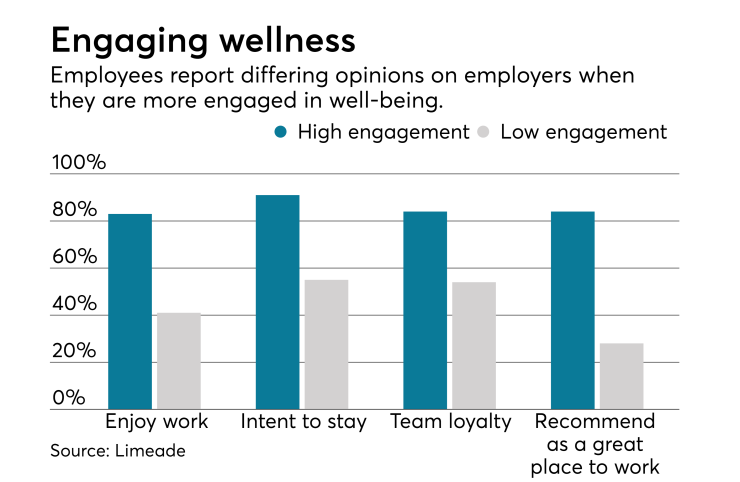The convergence of health and wealth isn’t just a megatrend; it’s also an opportunity for employee benefit professionals to engage workforces in better benefits decision-making.
Case in point: using psychographic analytics, which influence attitudes and beliefs, to improve employee engagement in high deductible health plans (HDHPs), health savings accounts (HSAs) and 401(k) plans. Through deeper insight into health and finance behaviors, employers are able to develop more effective plan design and communications for better connection and response to health and financial wellness programs.
But the key to wider success lies in benefit brokers and advisers explaining the value of this thoughtful approach and carrying that message to their employer clients.
After years of building psychographic segmentations for major financial-services firms, we have found that many health engagement matters are heavily influenced by the same needs and attitudes that drive financial behaviors. Thus, HDHP, HSA and 401(k) segmentations are equally rooted in both health and financial needs and attitudes.

Our psychographic research categorizes U.S. employees into seven groups or segments, each with a distinctive set of attitudinal hot buttons and benefit barriers to inform engagement programs. The key characteristics, behaviors and interests of healthcare consumers within each segment help paint a detailed portrait of their preferences, habits and attitudes – all of which must be carefully considered when designing and communicating health plan options.
In a typical employee population, we have found that 18% are confident and satisfied with their health plan. They don’t take risks, aren’t tech savvy and see no need to raise their low deductible, though they would consider an HDHP if an expert advised them on the most appropriate choice. They’re also intrigued by an HSA and have some understanding of finances.
Another 16% have financial discipline and understand investment risk, but they acknowledge not having enough money. Financial insecurity makes them very price sensitive and willing to skimp on medicine to save money. And while they’re interested in HDHPs and the opportunity to save money, this group fears that pursuing these avenues will worsen their healthcare.
Next up is a group we call “undisciplined, anxious, strugglers,” who account for 15% of an employee population. Although educated, they’re risk-averse, lack financial discipline and struggle to make payments. Given their financial situation, they don’t feel a need to learn about tax deferrals and, therefore, don’t understand the advantages of an HSA, nor are they interested in an HDHP, which they fear will increase their health expenses.
A similar segment involving 14% of an employee population are unhealthy, dissatisfied and sensitive to price. They’re usually not college educated and have a fairly low salary, lack financial discipline and often miss payments. Like the previous group, they don’t understand the advantages of an HSA, and as is the case with the first group, they’d prefer an adviser help with HDHP selection, though they fear it would raise their health expenses.
In addition, 13% represent perhaps the biggest education challenge of all as close-minded professionals who are perfectly content with the status quo. This group is educated and very financially secure with a high paying job and good health plan, which means they’re not interested in an HDHP. They’re also risk-averse and not familiar enough with tax or financial matters to know if an HSA is worthwhile. Like other groups, an expert would have to explain the advantages of an HDHP and HSA before they would consider those vehicles.
Another 13% of the employee population involves moderate advice seekers who are educated with a good job and decent health plan. While reasonably satisfied with their current plan, this segment is intrigued by an HDHP if it will lower their premiums. However, they’re worried that switching plans will end up costing them more money. They also are interested in an HSA, but prefer to discuss it with an adviser.
The last group, which makes up 11% of the workforce, involves well-educated and healthy professionals who enjoy dealing with finances, invest in the stock market, have a retirement plan and understand the value of tax-free capital gains offered by an HSA. Given their health status, they don’t anticipate needing many doctor appointments and hope that with an HDHP they wouldn’t end up paying the entire deductible.
It’s worth noting that we recently computed and stored the correct segment assignment among these seven groups for 200 million consumers. This data can be easily shared with employers to help them predict each individual consumer’s attitudes and preferences.
By categorizing their employee population into these segments, employers with the help of their broker or adviser can obtain a much better understanding of their attitudes and beliefs. This, in turn, will help them develop more effective plan design and communications for better results.





